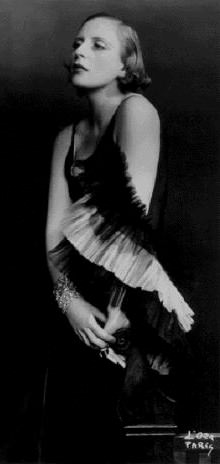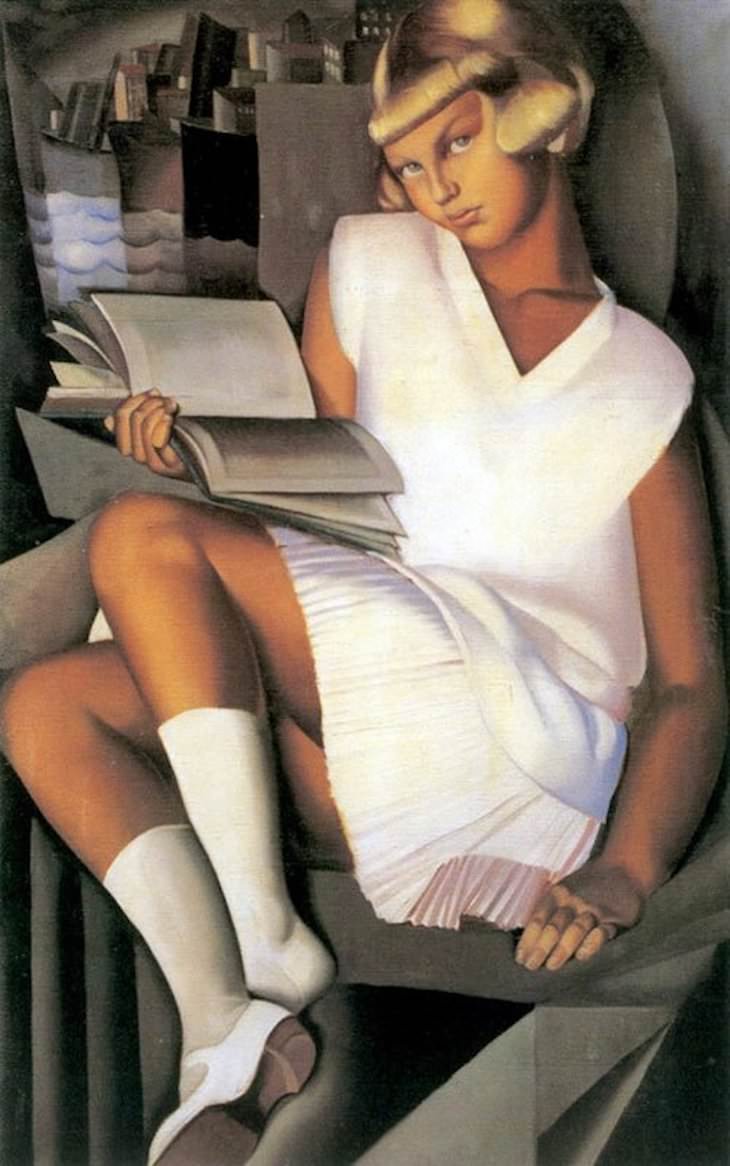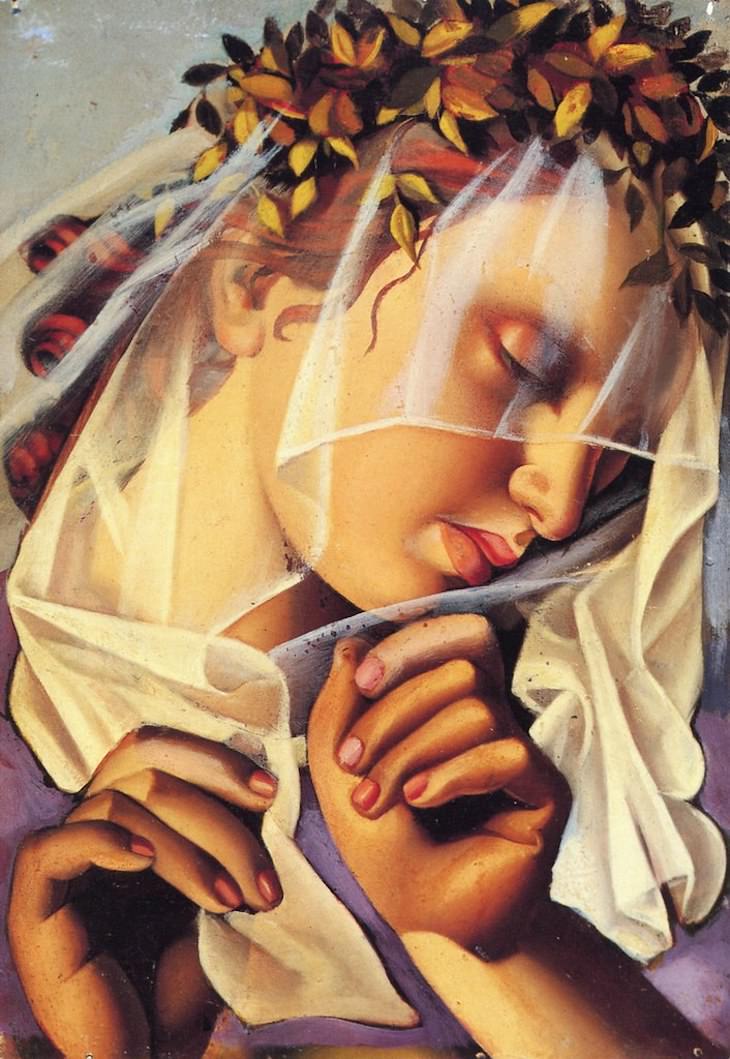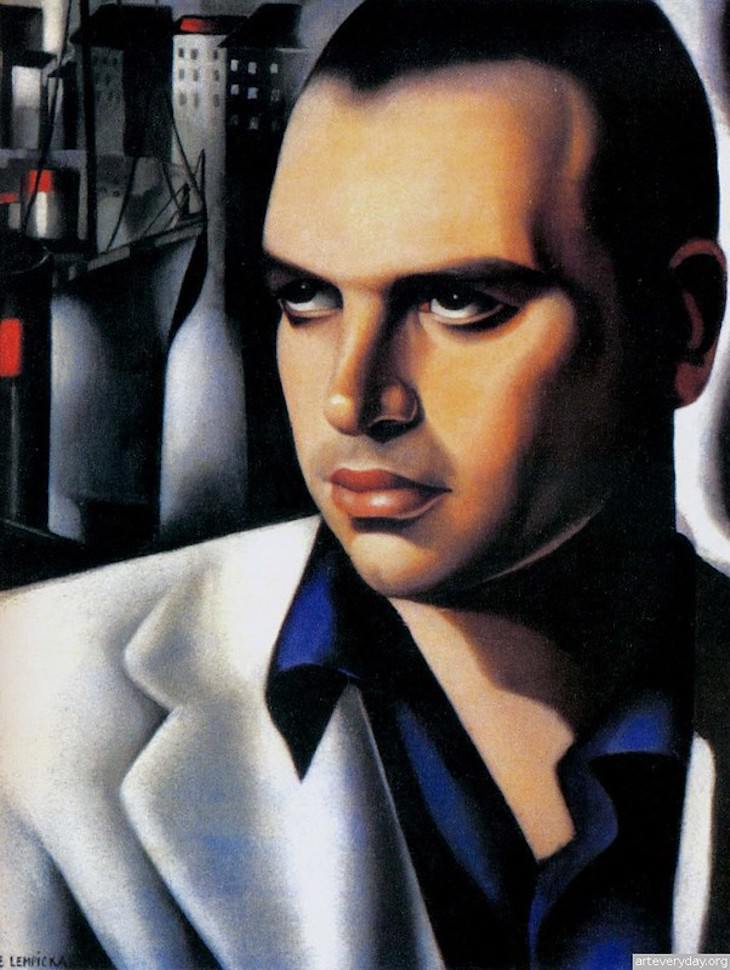
Beyond being a groundbreaking artist and iconoclast, Tamara de Lempicka is also a symbol of women’s liberation who defied the social conventions of her time in order to pursue her passions and contribute to society.
She was born under the name Tamara Rozalia Gurwick-Gorska in Warsaw in 1898. De Lempicka's family was wealthy, and at the age of 13, she was sent to a boarding school in Lausanne, Switzerland. However, she quickly dropped out in favor of touring Italy with her grandmother. That trip helped fuel her interest in art. After her parents' divorce, she moved to Saint Petersburg where she fell in love with and wed Tadeusz Lempicki, a prominent lawyer. The Russian Revolution caused the couple to flee to Copenhagen, then London, and finally to Paris.

In 1925 de Lempicka exhibited her work at two major venues - the Salon des Tuileries and the Salon des Femmes Peintres. This event was an important breakthrough for the artist, as her paintings were seen by numerous journalists from international fashion magazines and her work began to gain popularity.
Related: 34 Paintings Made By Picasso From Different Eras of Art


Kizette in Pink, 1926, oil on canvas, Image Source: Flickr
 Portrait of Tadeusz Lempicka, 1928, oil on canvas, Image Source: Flickr
Portrait of Tadeusz Lempicka, 1928, oil on canvas, Image Source: FlickrShe began winning awards for her art and received constant commissions from the French elite. She eventually divorced Tadeusz Lempicki and became the mistress of the baron of former Austro-Hungarian Empire Raoul Kuffner. By 1929 she painted one of her best-known works - Autoportrait, also known as Tamara in a Green Bugatti. This depiction of herself placed at the steering wheel of a luxurious Italian race car expresses the liberation some women were experiencing at the time, as well as the consumerist culture that was prevalent in the inter-war period.
Her career reached its peak in the 1930s when she hosted a successful show at the Carnegie Institute of Pittsburgh. Shortly thereafter, she was commissioned to paint portraits for King Alfonso XIII of Spain and Queen Elizabeth of Greece. In 1934 she married Baron Kuffner and together they fled to the US following the outbreak of World War II.
 Woman with a Garland of Flowers, Image Source: Flickr
Woman with a Garland of Flowers, Image Source: FlickrDe Lempicka and her husband first settled in Beverly Hills and later relocated to New York City. She hosted numerous shows but did not attain the heights of success she hoped for. She also received far fewer commissions for society portraits as her art deco style became outdated in the period of modernism and abstract expressionism. After the death of her husband, Baron Kuffner in 1963 she officially retired from her life as a professional artist. She ultimately moved to Cuernavaca, Mexico where she died in her sleep in 1980.
While she experienced numerous periods of turmoil in her life, de Lempicka is one of the most influential and unique artists of the 20th century. Recently, in 2019, her painting Le Tunique Rose (Pink Dress) sold at a Sotheby's auction for a record $12 million.
 Portrait of Count Vettor Marcello, 1933, oil in canvas, Image Source: Wikipedia Commons
Portrait of Count Vettor Marcello, 1933, oil in canvas, Image Source: Wikipedia Commons